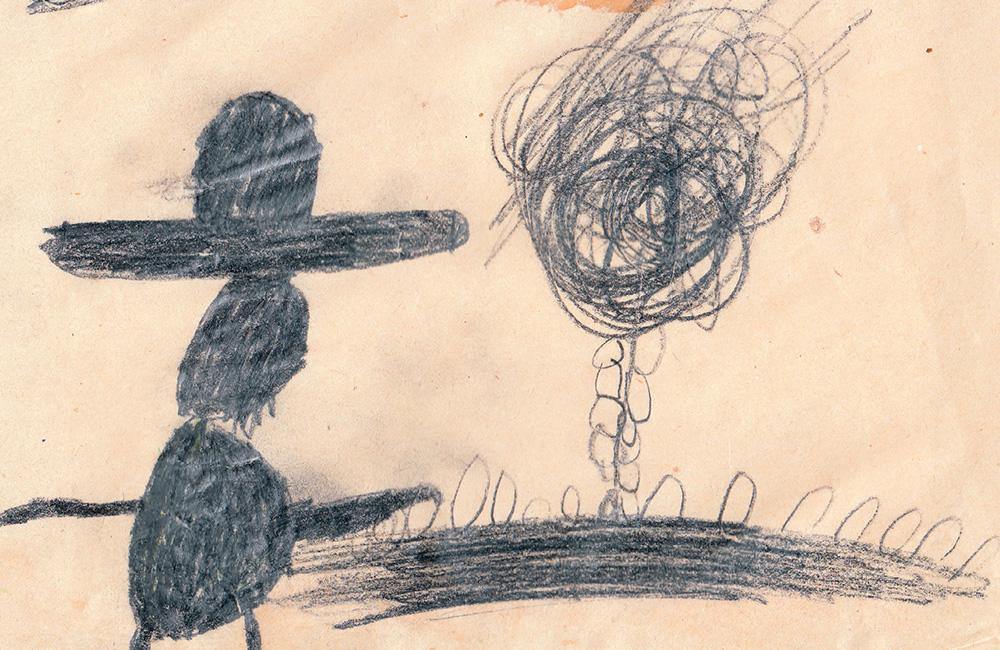First published: Summer 2021
Until the eighteenth century, drawings by children were disparaged by adults and often considered to be chaotic, irrational, or even evil. Then, from the eighteenth century onwards, childhood began to be seen in a positive way that was associated with innocence and freedom. This new perception of children gave way to a view that they have pure, original and good-natured souls.

Untitled (thematic category: accidents, deaths and cruelties), n.d., crayon on paper, 8 x 6 in. / 20 x 15.5 cm
The first studies on children’s art appeared in the mid nineteenth century. Since then, the characteristics of the subjects, forms and content in art by children have attracted the attention of psychiatrists, psychologists, anthropologists, art historians and artists, and studies of children’s drawings can be seen in two ways. First, from a psychological angle, like that of neuroscientists and psychologists, which focusses on describing the idiosyncrasies of the cognitive, emotional and behavioural development of the children themselves. It frames them within categories of illness, and studies the artworks to support the understanding, diagnosis and treatment of the child.

Untitled (special case of severe social prognosis), n.d., crayon on paper, 4.5 x 6 in. / 12 x 15 cm
Second, there is an aesthetic perspective, which is often adopted by specialists working in the art world. Artists, art historians and critics look at the aesthetic and artistic qualities of the work produced, and study it with reference to the artistic production, and the artist’s originality within a general artistic context such as art brut and outsider art.
by João Pedro Fróis
This is an article extract; read the full article in Raw Vision #108




